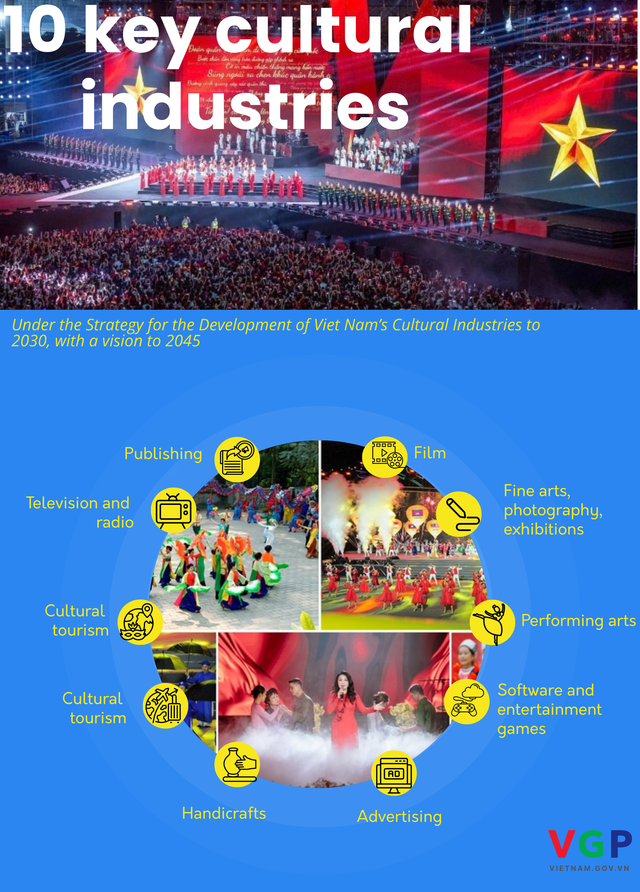Five-year cultural industries development strategy approved
VGP - Prime Minister Pham Minh Chinh approved the Strategy for the Development of Viet Nam’s Cultural Industries to 2030, with a vision to 2045.

The strategy aims at creating breakthroughs for economic sectors based on creativity, technology, and cultural value — a pillar that is increasingly affirmed in the country’s sustainable development process.
Specifically, the strategy identifies 10 key cultural industries namely film; fine arts, photography and exhibitions; performing arts; software and entertainment games; advertising; handicrafts; cultural tourism; creative design; television and radio; and publishing.
These sectors produce creative, technology-driven, and IP-based products that meet cultural consumption needs while supporting international integration and sustainable development. It looks to turn cultural industries into a dynamic economic sector with robust growth, stronger cultural exports, and enhanced global promotion of Viet Nam's cultural identity, heritage, and creativity. Developing the entertainment industry to better serve the public and tourists, while boosting national soft power, is a central objective.
Specific goals
By 2030, Viet Nam aims for cultural industries to grow by an average of around 10 percent annually and contribute 7 percent to national GDP. Employment in the sector is expected to rise by 10 percent per year, making up 6 percent of the national workforce. The number of cultural industry enterprises is projected to increase by 10 percent annually, while cultural export value is expected to expand by 7 percent per year. Most cultural industry centers, creative spaces, and cultural complexes will be modernized, well-planned, and integrated into local and national branding.
Looking ahead to 2045, Viet Nam targets sustainable cultural industry development, contributing 9 percent to GDP and accounting for 8 percent of total national employment. Digital cultural products are expected to represent over 80 percent of total output, while export value is projected to grow by 9 percent annually. These goals aim to position Viet Nam as a leading cultural and entertainment hub in Asia and solidify its standing on the global cultural map.
The strategy underscores the importance of building on each locality's unique strengths, especially in major economic regions. Selected provinces and cities with favorable conditions will be developed into regional cultural industry hubs. Viet Nam will also prioritize establishing a modern cultural business ecosystem that links creativity, production, marketing, distribution, and intellectual property protection.
From now until 2030, Vietnamese cultural products will primarily target domestic demand while gradually expanding exports, particularly to markets with large Vietnamese communities. Toward 2045, cultural products are expected to be more professional, innovative, and internationally competitive. Investment will be prioritized for six industries: film, performing arts, software and entertainment games, advertising, handicrafts, and cultural tourism.
Key tasks outlined in the strategy include raising public awareness of cultural industries, improving policies and legal frameworks, developing human resources, strengthening infrastructure, promoting innovation and digital transformation, expanding markets, and enhancing intellectual property protection.
The Ministry of Culture, Sports and Tourism will lead implementation, guiding ministries, agencies, and localities in developing action plans, refining policy mechanisms, and building national databases on cultural industries. It will also coordinate with relevant ministries to develop legal documents, synchronize data systems, and establish statistical indicators for the sector./.
